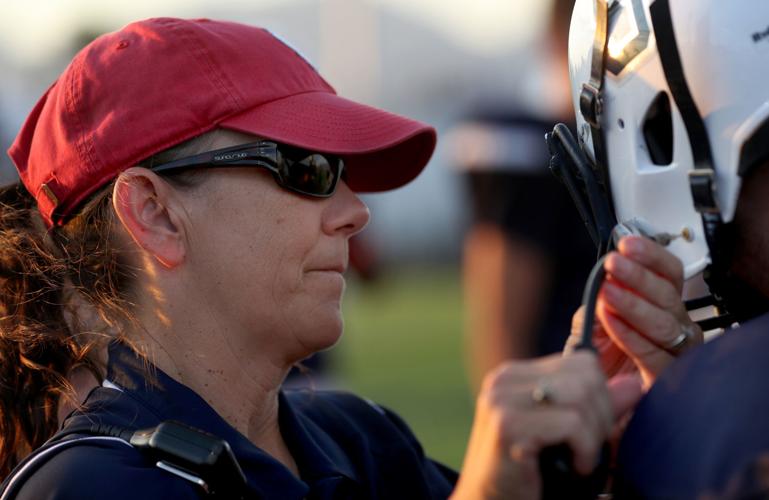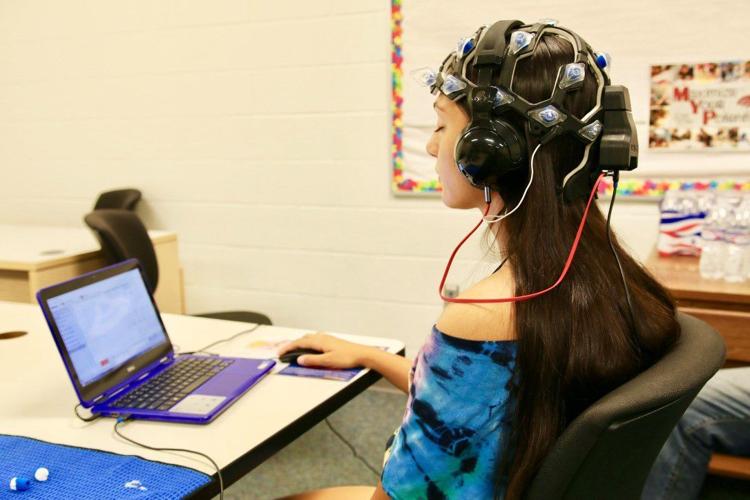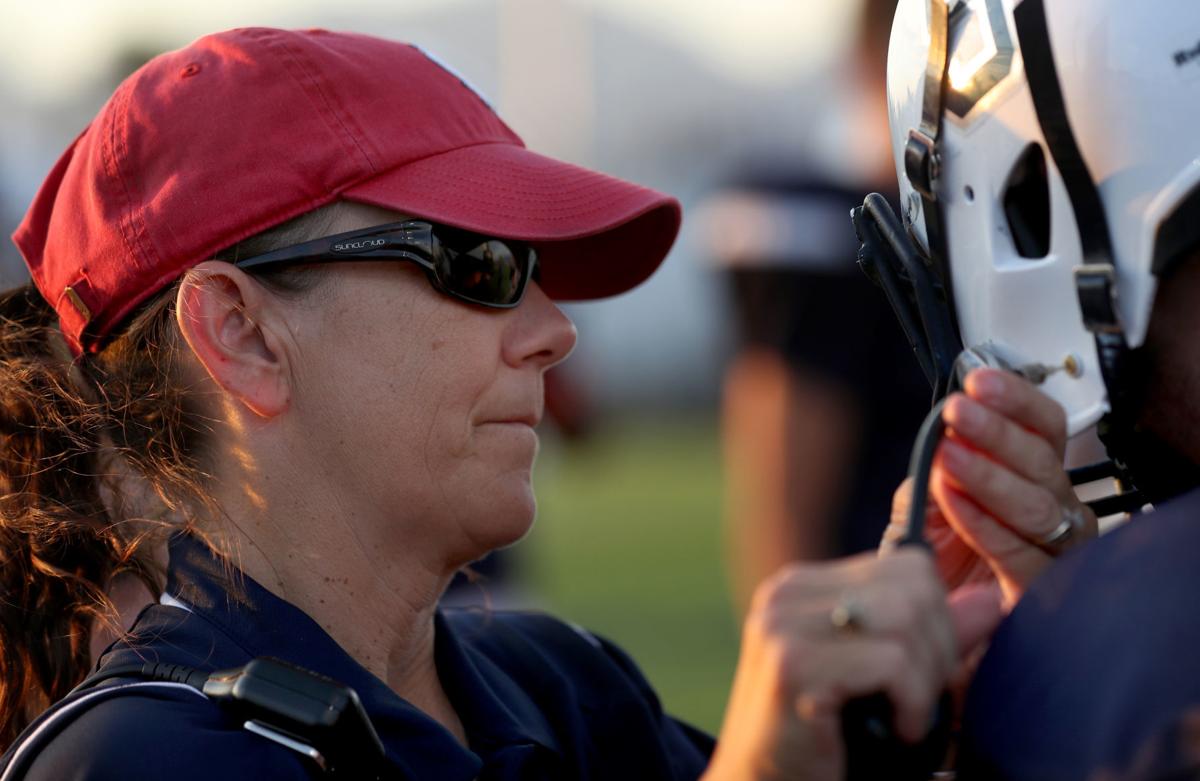Increasing concerns about concussions have led to a sharp decline in the number of Arizona parents who will let their kids play contact sports, but local school districts are taking steps to make sure injured athletes are fully ready to return to both the classroom and playing field.
The percentage of Arizona parents who will allow their children to play football, basketball and soccer dropped to 65% this year, down from 82% two years ago, according to the Barrow Neurological Institute’s annual concussion awareness survey. Based in Phoenix, Barrow focuses on neurology and neurosurgery, with its Concussion and Brain Injury Center offering treatment and rehabilitation for teens and adults with concussions, traumatic brain injuries and spinal cord injuries.
Football continues to be the leading concern among parents, with 40% saying they won’t allow their children to play the sport. The figure is up from 30% in 2016, according to Barrow.
But it’s not just parents who are concerned: Three out of 10 teens surveyed said they decided not to participate in one or more sports because of concussion concerns, representing a 50% jump over three years.
The survey also found:
- 90% of Arizona residents agree that concussions are a serious medical condition, but only 33% surveyed think enough work is being done to prevent them.
- 90% of teens agreed that concussions are a serious medical condition, but 25% said they would try to play through a concussion if a state championship was on the line.
- Nearly 40% of teens report that they’ve suffered a concussion while playing sports, more than twice the amount who reported in 2018.
- Among student-athletes who have had concussions, girls are more concerned than boys about the possible long-term impacts, with 80% of girls expressing concern compared to 56% of boys.
- 33% of girls surveyed said they decided not to participate in at least one sport because of concussion fears, compared to 25% of boys.
“Football has long caused the most concern among parents of high school student-athletes, but it is clear that concussion fears are rising for other contact sports,” Dr. Javier Cárdenas, director of the Barrow Concussion and Brain Injury Center, said in a news release. “We know that sports offer many health benefits. Our challenge is to make sure the public can weigh the benefits against injury risks and make informed decisions.”
Only 38% of kids ages 6 to 12 played team or individual sports on a regular basis in 2018, according to the Sports & Fitness Industry Association. This number is down from 45% in 2008, showing a slow but steady decline.
Participation in high school football in Arizona continues to drop significantly. The state reported that 20,929 athletes played 11-man football in the 2015-16 school year, according to statistics from the National Federations of State High School Associations. That figure has fallen to 16,577 students for the 2018-19 school year, a drop of nearly 21%.
All of Arizona’s high school football players must read the Barrow Brainbook, the most comprehensive concussion education effort in Arizona.
Pima County school districts are taking concussion training, prevention and management a step further, implementing state-of-the-art methods to make sure student-athletes stay as safe as possible and that schools are responding appropriately when concussions occur.
Sahuarita’s solution
Five years ago, Sahuarita Unified School district revamped its concussion management protocol at one of its schools after a student’s academic performance appeared to slip following her head injury.
The student mostly went through the school day with her head on her desk. A school counselor asked whether there was any support available, said Dr. Sarah Dachtyl, one of the creators of the Cognitive Return to Exertion (CoRTEx) program.
“I researched what other districts and colleges/universities were doing in this situation and found that there were some guidelines for returning students to school activity,” Dachtyl told the Star in an email. “However, none of the protocols exactly fit what we needed in our district, so we put together a team to create CoRTEx.”
CoRTEx is a multistep concussion management protocol based on new research about brain healing in kids and teens.
Students who have a concussion experience symptoms including headaches, fatigue, impaired eye movement, sensitivity to light or sound, irritability, anxiety, difficulty concentrating and remembering and sleep disturbances that can impede the learning process and keep kids from attending school, Dachtyl said.
Students referred to CoRTEx are checked for symptoms of concussion, and a plan is devised to keep them academically engaged. Students are allowed to wear sunglasses in class if light sensitivity is an issue, while those with eye-movement issues or difficulty remembering receive printed copies of notes.
A list of academic accommodations are sent to the students’ teachers, parents, administrators and other relevant employees. Follow-up meetings take place weekly or more often, if needed. Student-athletes must return to their baseline academically before they’re cleared to play sports again, Dachtyl said.
The CoRTEx program was implemented districtwide in 2015. The team manages an average of 81 students ranging in age from preschool to 12th grade each academic year. Most of the students referred to the CoRTEx program were high-schoolers, particularly freshmen: In fact, ninth-graders account for 81 of the 225 high school students who have participated in the program.

Girls’ soccer players from Sahuarita Unified School District underwent baseline testing with portable EEG machines last fall, as research for the district’s concussion management protocol. — Credit: Amber Woods
Sports — notably football, soccer, cheerleading and basketball — are responsible for most of the reported concussions. Falls, blows to the head and car crashes are the top reasons for non-sports-related referrals.
So far, CoRTEx appears to be working. Analysis performed a few years ago showed that students who sustained a concussion and were managed by the CoRTEx team maintained their GPAs. Meanwhile, those who suffered concussions but weren’t managed by the CoRTEx due to their parents declining consent had a statistically significant decline in their GPAs, Dachtyl said.
“Parents report feeling safe sending their student to school with a plan that is proactively put in place,” Dachtyl said. “Students are relieved that they are not responsible for telling each teacher what happened to them, what their symptoms are and what they need their teachers to do to help them.”
Sahuarita’s school district has also been working closely with the health department and SPARCC, a local sports medicine, rehabilitation and concussion center. Last year, Sahuarita partnered with SPARCC to record the base brain waves of the district’s girls soccer players. When head injuries occurred, more EEGs were taken and compared to the athletes’ baseline scans.
The pilot program provided the district with some meaningful information, but was fairly expensive — and Sahuarita School district superintendent district Manny Valenzuela said the ongoing costs would have been difficult for the district to maintain.
Sahuarita’s athletic trainers continue to refer athletes to SPARCC for testing at the student’s own expense, if parents or athletes express an interest. The district is also seeking grants and other funding to continue testing, Dachtyl said.
Additionally, the district has begun working with an orthopedic surgeon affiliated with Santa Cruz Regional Medical Center, Olivia Morris. Morris will work with other doctors on sideline coverage and follow-up clinics.
“I believe that our job as educators is to find pathways for all students to succeed and for a lot of our students, interscholastic athletics are a great vehicle to teach some of life’s most valuable lessons about teamwork, perseverance and self-discipline,” Valenzuela said. “But athletics does carry with it, like a lot of things, a certain level of risk. To be able to do things to help mitigate that risk … I think it’s exciting to be a part of that.”
At TUSD, it’s ‘Return to Learn’
Tucson Unified School District’s certified athletic trainers take a similar approach, using the “Return to Learn” protocol for roughly the last eight years.
Athletic trainers take a central role in the process. Each of TUSD’s nine high schools employ a full-time trainer whose job is to not only to determine if someone has suffered a concussion but also organize the athlete’s follow-up care, whether it’s a trip to the emergency room or a referral to a specialist.
The “Return to Learn” plan involves not just returning to the classroom, but also safely returning a student to the playing field, said Becky Fajardo, Sahuaro High School’s athletic trainer.
“The ‘Return to Learn’ component always comes first, because they’re student-athletes and we always take care of the student part first,” Fajardo said. “The plan involves recognizing that there’s been a concussion, doing whatever referral is necessary and then gradually integrating that student back into the classroom based on their cognitive signs and symptoms and how much of a cognitive load they can take.”
When a suspected concussion occurs, trainers notify the student’s parents, teachers and the school nurse. All parties involved monitor the concussed student, Fajardo said.
“Brain injuries are not like an ankle sprain or a broken arm. People can’t see it,” Fajardo said. “So a kid might be struggling in a class and the teacher might think it’s because of other reasons, and not necessarily a concussion. If we alert the teachers of it, it makes them more aware. The biggest component of the plan is making sure everyone’s educated.”
Students who have suffered concussions are assigned colors based on their limitations. The red zone means the student needs complete academic rest, even if it means taking a day or two off school. The blue zone, at the opposite side of the scale, signals a safe return to full academics. Once a physician clears the student, he or she can return to sports.
Athletic trainers were initially focused on the return to sports component of the program, until non-athletes at Cholla and Sahuaro suffered fairly significant head injuries. Fajardo and others spent about two years developing a district-wide plan, detailing the steps necessary for a student-athlete to safely come back to the classroom and the playing field following a head injury.
“I’ve been an athletic trainer since 1994 and the evolution of concussion management has been tremendous, all in a positive direction,” Fajardo said, adding that the “suck it up and play” or “take one for the team” mentalities are no longer part of the equation.
Fajardo remembers decades ago, when concussed student-athletes would be sent back into games if they were symptom-free for 30 minutes.
“Knowing what we know now, that’s awful. That’s not the best course of treatment for kids,” Fajardo said. “Because of all the research that’s out there and kids are becoming more aware of it.”
The public attention given to concussions has led people to speculate that they’re on the rise. That’s not the case, Fajardo says; concussions are simply being reported at a higher rate.
“The way things have changed is setting our kids up to succeed later on in life,” Fajardo said. “It’s not winner-take-all in the high school or even in the college game.”






